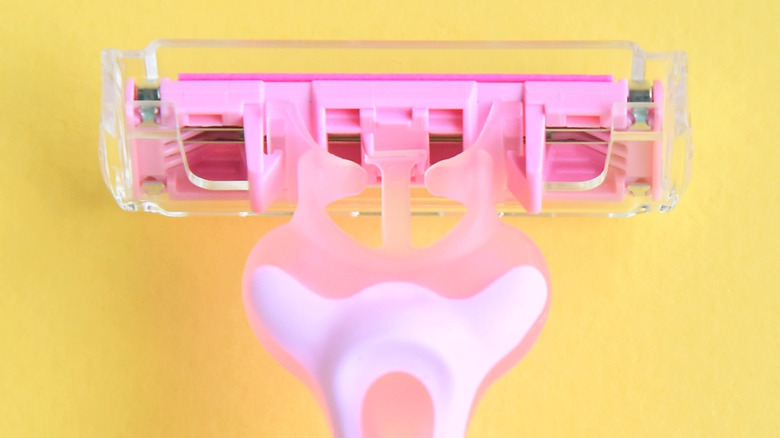Throw Your Razor Away Immediately If You Notice This
Whether you use a disposable razor or one with a replaceable blade, it can be hard to keep up with the condition of it. Some use a razor daily for facial hair, while others use it every once in a while to trim body hair, especially on the legs and under the arms.
Over time, you'll come to notice that it's time to throw away a razor when the shave you're getting isn't as close as you'd like it to be. A dull razor can be detrimental to your skin, and can even cause more cuts and irritation than a sharp blade, according to Gillette Venus. This is due to the dull blade pulling at your body hair and skin, as it's not able to glide across the skin's surface.
But what you really should look out for when you next shave is the condition of the blade itself, especially if you have a tendency to just leave your razor in a moist, wet environment like the shower.
When you spot rust forming on your razor, it's time to replace it
As Leaf TV notes, rust can form pretty quickly when water is left on the blade. This water oxidizes to form rust, which is commonly used to describe "the corrosion and oxidisation of iron and its alloys", including steel blades (via NCH Europe). And once you see that flaky, reddish orange gunk on your blade, it's time to throw it away.
"Rust is a sign that a replacement is needed immediately," Charles Park, Head of Product Innovation at Dorco Razors, told Good Housekeeping. "Not only does rust interfere with the performance of the blade, it can cause serious blood infections if the skin is nicked during shaving." Tetanus is the most common infection associated with rust, but according to Healthline it's not the rust that causes the infection, it's caused by Clostridium bacteria that may be on the rusted object.
While you should immediately throw out a razor if you can see rust, there are ways to prevent it from happening in the first place. This includes rinsing and drying your razor after using it, and not storing it in the bathroom, as humidity is a major factor for rust formation (via Leaf TV).

